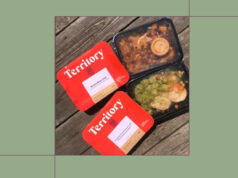In the middle of the Pacific Ocean, about halfway between Hawaii and Guam, lies the Republic of the Marshall Islands (RMI). Made up of hundreds of tiny islands and about 30 atolls (ring-shaped islands with lagoons in the center), the country is more ocean than it is land. But despite being surrounded on all sides by water, the 60,000 residents haven’t ever had reliable access to clean drinking water.
Most Marshall Islands residents have long relied on traditional rainwater harvesting, which is easier to set up and manage than water utility systems in such a remote region. But as droplets fall on roofs and run into catchment systems, the water can become contaminated with bacteria from animal poop and debris. Groundwater, which is used in times of drought, is just as bad, if not worse, because sea level rise is causing salt water to infiltrate the freshwater aquifers underground. Residents frequently got sick with waterborne diseases, like gastroenteritis and cholera, which caused malnutrition and other health issues. “[We’ve spent] so much money trying to provide medication to or cure people and children suffering from all these waterborne diseases,” explains Moriana Phillip, general manager of the Environmental Protection Authority (EPA) in the RMI.
Lack of clean water isn’t unique to the Marshall Islands. According to a 2023 UNICEF report, over 2.2 billion people around the world don’t have access to safely managed drinking water, which is defined as “drinking water from an improved source that is accessible on premises, available when needed and free from fecal and chemical contamination.” In some rural or impoverished areas, water treatment infrastructure was never established so residents are left to drink untreated well water, rainfall, or surface water like lakes and streams—which is often contaminated by pollutants from the surrounding watershed (like agricultural fertilizers or animal waste). However, lack of clean water access can also result from aging infrastructure and government mismanagement (like in the case of Flint, Michigan) and/or natural disasters (like in Jackson, Mississippi).
“A water crisis is definitely a women’s crisis.” —Anu Paudyal Gautum, knowledge management specialist, UNICEF’s WASH program
Ensuring access to clean drinking water can be complicated in places where infrastructure is either nonexistent or poor and often requires a significant amount of funding and on-the-ground coordination. But the results are game-changing for local communities—particularly, for the women who are disproportionately impacted by the effects of inequitable access to clean water. “A water crisis is definitely a women’s crisis,” says Anu Paudyal Gautum, a knowledge management specialist in UNICEF’s Water, Sanitation, and Hygiene (WASH) program.
When I witnessed the local, women-led nonprofit Kora in Okrane (KIO) distribute Sawyer water filter systems to households in the Marshall Islands this past July during a trip with Sawyer to report on KIO’s water project, I saw women and kids watch attentively—some pulling out their phones to take videos of the silty water that turned crystal clear as it emerged from the filter—as the men sat on the sidelines. And throughout the rest of my trip, I repeatedly saw first-hand how women are at the forefront of the movement to eradicate the very water-access issues that primarily leave them out to dry.
The health and safety risks of unclean water
In the U.S., where most households have clean, plentiful water running through a tap at all times, it’s hard to imagine what it means to live without it. (Keyword is most here; Native American households in the U.S. are 19 times more likely than white households to live without running water, and predominantly Black communities like Flint and Jackson have experienced public health crises from unsafe drinking water.) But clean water isn’t just for drinking; it affects every aspect of life like nutrition, hygiene, mental health, and safety.
Waterborne diseases, like diarrhea, giardia, typhoid fever, and E.Coli infection, are the most common (and obvious) result of unsafe drinking water. Many people suffer from dehydration and nutritional deficiencies when they can’t keep water in. Over the long term, this can lead to malnutrition, especially in children. Many areas also lack proper hygiene and sanitation services as a result of insecure water access, which increases the risk of preventable infection and disease. But it’s not just physical health that is affected; the stress of water scarcity and collection can take a major toll on people’s mental health and can lead to increased rates of depression and anxiety, too.
As climate change increases the frequency and severity of extreme weather patterns, the world water crisis worsens. Drought conditions lead to water scarcity, causing people to compete for resources or collect from dirty sources. Rising sea levels contaminate groundwater and other fresh water sources so it becomes salty and undrinkable. And natural disasters, like hurricanes, floods, and earthquakes, can destroy or contaminate water supplies or infrastructure. For all of these reasons, roughly half of the world’s population experiences water scarcity for at least part of the year—a figure that’s projected to increase if the climate crisis worsens.
The unique impact of water scarcity on women and girls
In societies without safe drinking water, everyone is affected. But women are disproportionately impacted—starting with bearing the burden of finding and distributing drinkable water to their families. In seven out of 10 households where water is collected off premises, women and girls are responsible for the collection. Sarah Evans, founder of nonprofit Well Aware that works on water projects in East Africa, notes that in many areas where she works, women have to walk about three and a half miles daily to collect water from a hand pump. “That’s a good chunk of time, especially carrying water for half of it. It could be more than half your day,” she says.
While spending one’s day waiting for water and carrying it home is objectively inconvenient, many are unaware that water wells are also a “tragically common place for violence against women,” says Evans. The long walking distances and queues put women at risk of sexual violence and can exacerbate problems at home. When one of Well Aware’s employees was a young girl, “her father would abuse her when she came home too late with the water needed for their evening meal,” says Evans.
But even when women aren’t responsible for the act of collecting water from afar, they still bear the brunt of household responsibilities, which includes purifying the water for drinking, cooking, and cleaning. Before receiving their filters, Marshallese residents like Carrley Lang (who grew up on the outer island of Wotje Atoll), had to “boil a bunch [of water] and then put it in the cooler every day,” she says. When she and other women tasked with water purification ran out of butane (which they used to boil water and also to cook), they needed to make a trip to Majuro, the main island, or wait for a shipment. Some people live on islands so remote that they only receive supplies once a year, says Angeline Heine-Reimers, president of KIO.
The Republic of the Marshall Islands is also a matrilineal society, meaning land and property are passed down through women. On their land holdings, women have respect and power to make decisions for their household. But water scarcity on those islands has caused residents to migrate to Majuro. “When you move away from your land—like a lot of the women from the outer islands—they come here, but their land holding is out there,” says Marie Maddison, an advisor for Women United Together Marshall Islands (WUTMI). “So here, whoever is earning the income for the family has the power. Away from their power base, [the displaced women] have issues at home.” Forty-eight percent of women in the RMI have experienced physical violence by a partner, and 27 percent have experienced an act of economic abuse, like being denied access to money for household needs, according to the RMI Family Health and Safety Study.
Lack of access to clean water also affects school attendance rates, as illness rates soar. And it doesn’t just cause unpleasant symptoms like diarrhea. “Once you ingest water that has some kind of biological contaminant in it, it’s going to mess with your intestines,” says Evans. “So even if you are eating okay, but your body isn’t taking in those nutrients, it’s not going to matter.” According to UNICEF, undernutrition in early years leads to stunted growth and child deaths.
But even when children are healthy enough to be in the classroom, if schools don’t have clean water, women and girls will stay home during menstruation due to unhygienic sanitary facilities and lack of privacy. This forces girls to miss four or more days a month, which can easily make them fall behind. After missing so much school, many inevitably drop out. “It’s almost an accepted occurrence in many places,” says Evans.
After spending over a decade in areas with water crises, Evans has witnessed the resilience and motivation of women in many communities. I also witnessed this on RongRong in the Marshall Islands, when dozens of women and girls gathered around to learn how to purify their drinking water. “Obviously they have the drive—just without the resources, they can’t do anything with it,” Evans says.
The women working on solutions
“Water is Life.” That’s the translation of KIO’s Dren en Mour project, a five-year project to bring drinking water to all residents in the RMI that ended in July 2023. The KIO founders and their all-women team distributed Sawyer’s five-gallon buckets and filtration systems across dozens of islands across the entire RMI. Residents can now fill one of the buckets with their dirty drinking water (either groundwater, rainwater, or surface water) and use gravity to feed it through a hose to the filter, which removes harmful pathogens like bacteria, protozoa, and microplastics. When properly maintained, these filters can last over 10 years and are simple and affordable to replace.
Already, residents from islands that were among the first to receive water filters, like the outer island Mejatto, have seen a drastic improvement in disease rates. Before the filters, over 54 percent of adults reported having diarrhea over a two-week period, according to a progress report from KIO. Afterward, no one had symptoms anymore.
RMI residents also have more time now that they use the filters. “Life is much better here—more time for others, more time to work,” says Lang, who used to boil her water. And families are saving money, too. Sawyer, the company that provided the filters for Dren en Mour, works on projects in other countries, including Fiji. According to data collected by Sawyer,, Fiji families have experienced “an average of $22.46 USD per month savings on medical costs, $10.50 per month savings on purchased water, and had an increase of 1.13 days of adult work days added to their monthly budgets,” since the distribution of the water filters.
“That’s really our strategy: to empower the woman and then she will empower her family.” —Monique Levy-Strauss, founder, Kora In Okrane (KIO)
“Water really is the beginning of any kind of development, much less prosperity in these regions,” says Evans. “It’s a catalyst for everything; without it, nothing else is possible.” When communities get access to clean water, the effects begin to ripple outward to increase the overall quality of life. “Once you have the water system implemented, you go back a year later and it looks like a different place,” says Evans. The children look healthier and better nourished because water-borne disease rates have fallen.
School attendance increases, too, especially for women. Girls with access to clean water are able to “continue their education during those four days [of menstruation],” says Gautam, and increase “their overall learning by ensuring they are attending school full time.” After working in this field for over a decade, Evans has seen dramatic changes in the communities where they installed water systems: “There are young girls who are planning on going to college and have these big professional dreams who probably would not have even gone into secondary school had they not had water,” she explains. “For each additional year that a girl is in school, her future income goes up by 12 percent.”
But the effects don’t stop there: Access to clean water “frees up women’s time to engage in other economic activities,” says Farai Tunhuma, senior advisor for UNICEF’s WASH program. Recently, Well Aware worked on a project in northern Kenya where miles of arid land sat unused. “After we went back a few years later, the women had already carved out hectares of land and were cultivating it and growing fruits and vegetables,” says Evans. These women provide this food for their families and local schools, but they also now sell it in the markets to create their own income. “Having the source of water there opened up a whole new life for these women because they weren’t having to walk and get water. They weren’t having to take care of kids who were sick all the time,” says Evans.
When women don’t have to walk long distances, they’re safer, too. According to Tunhuma, gender-based violence was reduced when women had access to water in their homes after UNICEF established a clean water project in Zimbabwe. “If we do not have to keep women standing around waiting in lines late in the day or getting home late at night just because they don’t have water, that takes all of that out of the equation and gives women that much more power,” says Evans.
Because women are disproportionately affected, it feels especially apt that women are also the change makers on the front lines of the water crisis. As I reported this story, nearly every person I talked to was a woman—at nonprofits and government agencies, and the involved locals, too. In fact, Monique Levy-Strauss, the founder of KIO, says the nonprofit’s entire mission is to uplift women: “The women are key: If you help the women, you help the kids, you help the men. So that’s really our strategy: to empower the woman and then she will empower her family.”
Well+Good articles reference scientific, reliable, recent, robust studies to back up the information we share. You can trust us along your wellness journey.
- Barkey, B., and Ryan T. Bailey. “Estimating the Impact of Drought on Groundwater Resources of the Marshall Islands” Water (2017): 9, no. 1: 41. doi:10.3390/w9010041
- Ruckart, Perri Zeitz et al. “The Flint Water Crisis: A Coordinated Public Health Emergency Response and Recovery Initiative.” Journal of public health management and practice : JPHMP vol. 25 Suppl 1, Lead Poisoning Prevention,Suppl 1 LEAD POISONING PREVENTION (2019): S84-S90. doi:10.1097/PHH.0000000000000871
- Bisung, E., & Elliott, S. J. Psychosocial impacts of the lack of access to water and sanitation in low-and middle-income countries: A scoping review. Journal of Water and Health (2017): 15(1), 17–30. doi:10.2166/wh.2016.158
- Tallman, P. S. et. al. Water insecurity and gender-based violence: A global review of the evidence. WIREs Water (2023): 10(1), e1619. doi:10.1002/wat2.1619











